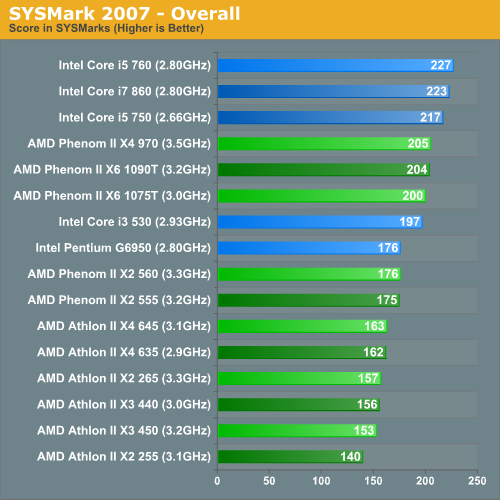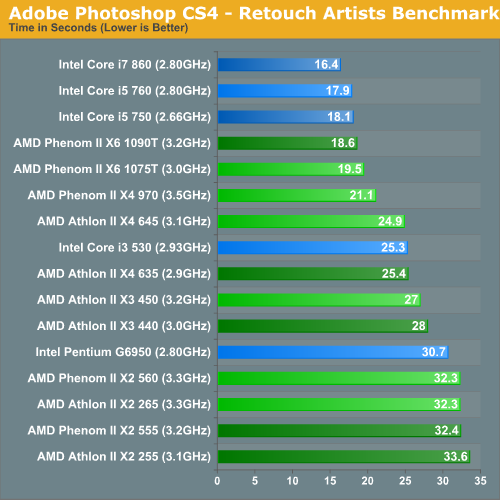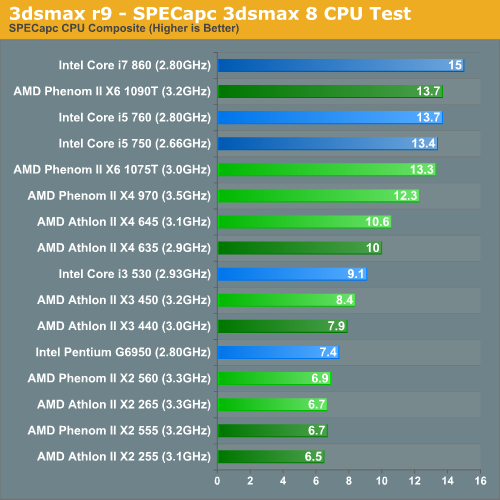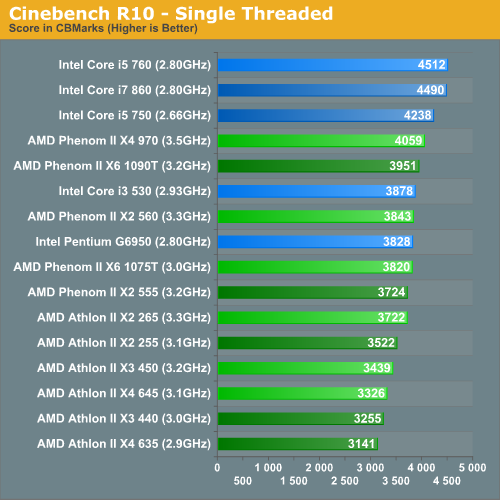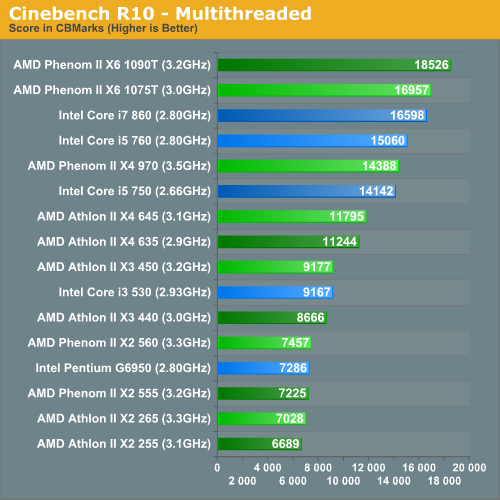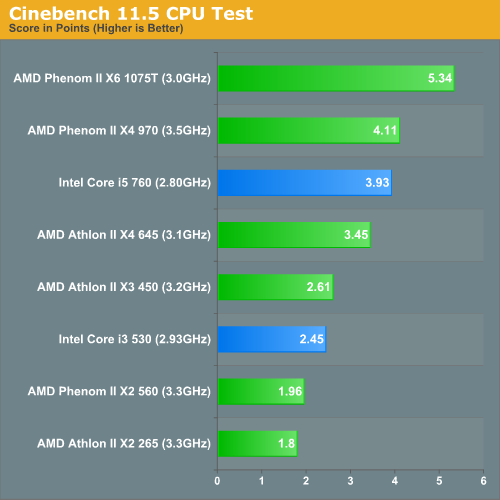
|
TopNax |
|
Home†††††† Previous††††††† AMD page†††††††† Intel page†††††††† Next |
|
|
|
AMDs fall refresh:† new Phenom II and Athlon II CPUs Balance price and performance |
SYSMark 2007 PerformanceOur journey starts with SYSMark 2007, the only all-encompassing performance suite in our review today. The idea here is simple: one benchmark to indicate the overall performance of your machine.
Let's go down the matchups shall we? The Phenom II X4 970 BE is competitive with the Core i5 750. Intel manages a 5.9% performance advantage in this comparison, but as I mentioned earlier the two chips will trade blows across much of our benchmark suite. The Phenom II X6 1075T doesn't have a direct competitor but here it does worse than the cheaper Core i5 750. SYSMark is mostly a test of good dual-core performance and as a result Intel's turbo does more for performance here than AMD's 2-extra cores. It's a valid scenario to keep in mind as the number of applications that can stress all 6 cores are limited. Although when you're running one, there's generally no substitute for more cores. As I mentioned in the introduction, the Phenom II X2 560 will easily lose to the Core i3 530 as the graph shows above. The same is true for the Athlon II X4 645. The chip gives you four cores at a very competitive price, but in a test that primarily stresses two cores the 645 doesn't get a chance to run. The Athlon II X3 450 vs. Pentium G6950 matchup begins in Intel's favor, however this is the one and only time in our review that you'll see this happen. Adobe Photoshop CS4 PerformanceTo measure performance under Photoshop CS4 we turn to the Retouch Artistsí Speed Test. The test does basic photo editing; there are a couple of color space conversions, many layer creations, color curve adjustment, image and canvas size adjustment, unsharp mask, and finally a gaussian blur performed on the entire image. The whole process is timed and thanks to the use of Intel's X25-M SSD as our test bed hard drive, performance is far more predictable than back when we used to test on mechanical disks. Time is reported in seconds and the lower numbers mean better performance. The test is multithreaded and can hit all four cores in a quad-core machine.
Our Photoshop benchmark has traditionally favored Intel's architectures, which is definitely visible when you look at the Phenom II X6 1075T and Phenom II X4 970 BE above. The Athlon II X4 645 does slightly better than the Core i3 530 (effectively on-par with the 540), while the Athlon II X3 450 does noticeably better than the Pentium G6950. You can also see why I'm not really interested in the dual-core parts. They perform well, but that third core does come in handy for very little added cost. |
3dsmax 9 - SPECapc 3dsmax CPU Rendering TestToday's desktop processors are more than fast enough to do professional level 3D rendering at home. To look at performance under 3dsmax we ran the SPECapc 3dsmax 8 benchmark (only the CPU rendering tests) under 3dsmax 9 SP1. The results reported are the rendering composite scores.
The 1075T comes close to its competitors in the 3dsmax test, while the Phenom II X4 970 definitely falls short. The quad-core Athlon II X4 645 does much better than the dual-core i3 530 (and by extension the 540). The same holds true for the Athlon II X3 450 vs. the Pentium G6950. Cinebench R10Created by the Cinema 4D folks we have Cinebench, a popular 3D rendering benchmark that gives us both single and multi-threaded 3D rendering results.
Single threaded performance is AMD's weakest point. Even at 3.5GHz the Phenom II X4 970 can't keep up with a turboed Core i5 750. If you run a predominantly single threaded workload, Intel will typically offer you better performance than AMD.
Turn up the thread count however and the value proposition shifts to AMD. The Phenom II X6 1075T gives you more for your money in a heavily threaded app than the Core i7 860, and the Phenom II X4 970 is a smidge ahead of the i5 750. The Athlon II X4 645 and Athlon II X3 450 both do very well. I've started running Cinebench 11.5 in preparation for an update to Bench, some of the initial results are below:
The default benchmark is heavily threaded. As a result the scores echo what we just saw. |
|
Home†††††† Previous††††††† AMD page†††††††† Intel page†††††††† Next |

